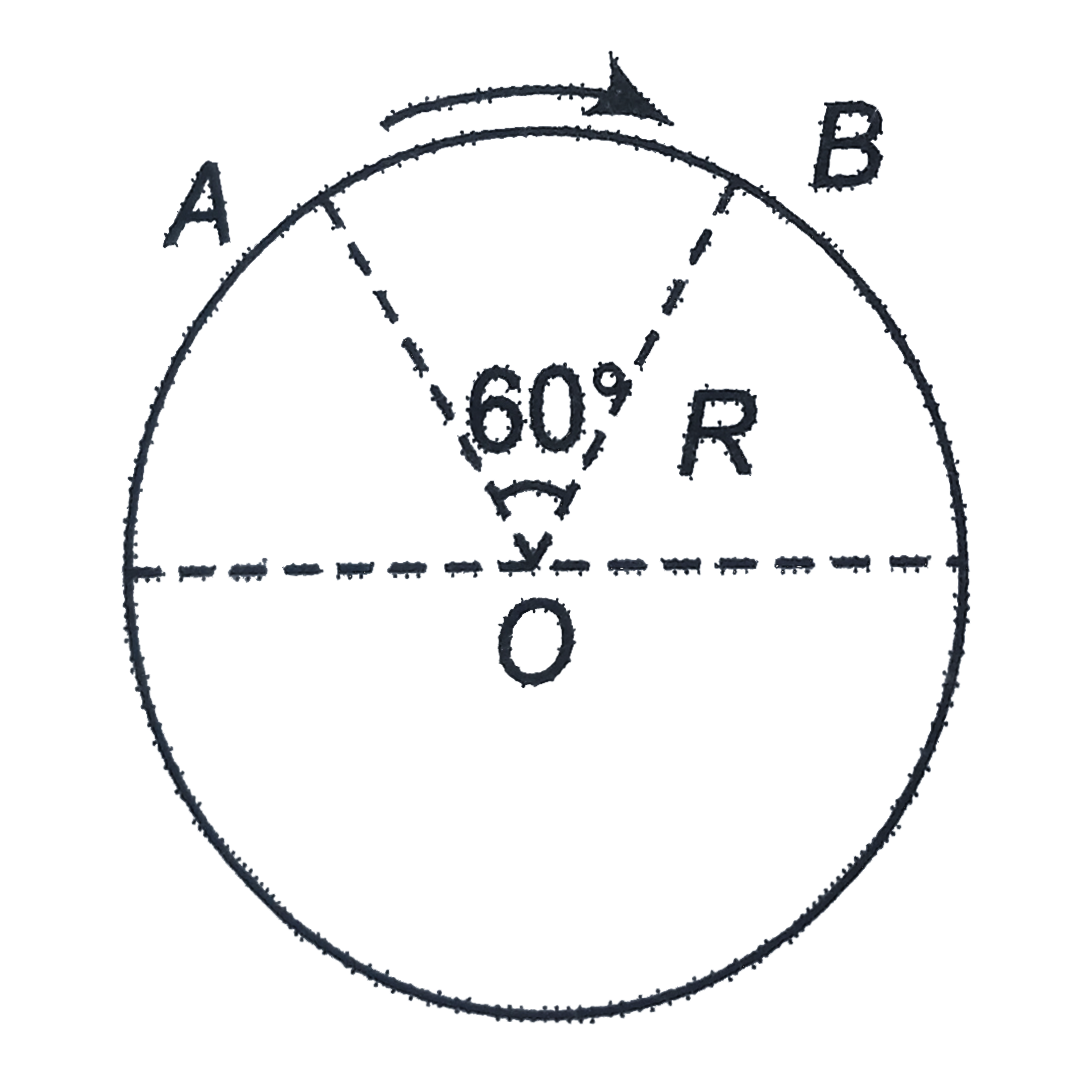A particle moves in a circle of radius R. In half the period of revolution its displacement is ………… and distance covered is ………. .
The correct Answer is:B
2R,πR
Displacement = AC =2 R
(##VMC_PHY_XI_WOR_BOK_01_C02_E05_012_S01.png" width="80%">
Topper's Solved these Questions
- BOOK - VMC MODULES ENGLISHCHAPTER - KINEMATICS OF A PARTICLE EXERCISE - JEE MAIN (archive)19videos
KINEMATICS OF A PARTICLE
- BOOK - VMC MODULES ENGLISHCHAPTER - JEE MAIN REVISON TEST-23EXERCISE - PHYSICS (SECTION 2)1videos
JEE MAIN REVISON TEST-23
- BOOK - VMC MODULES ENGLISHCHAPTER - LAWS OF MOTION EXERCISE - IMPECCABLE53videos
LAWS OF MOTION
Similar Questions
A particle moves over three quarters of a circle of radius r. What is the magnitude of its displacement ?
 View Solution
View SolutionA particle is moving in a circle of radius R.
a. What is its displacement when it covers (i) half the circle, (ii) full circle?
b. What is its distance when it comers (i) half the the circle and (ii) full circle ?.
 .View Solution
.View SolutionA particle moves on a circular path of radius 'r'. It completes one revolution in 40s. Calculate distances displacement in 2 min 20 s.
View SolutionA particle moves along a circle of radius R with a constant angular speed ω . Its displacement (only magnitude) in time t will be
View SolutionThe radius of a planet is R1 and a satellite revolves round it in a circle of radius R2. The time period of revolution is T. find the acceleration due to the gravitation of the plane at its surface.
View SolutionA particle moves along a circular path of radius R. The distance and displacement of a particle after one completer revolution is
View SolutionA particle move in a semicircular of radius R from O to A . Then it moves parallel to z-axis covering distance R upto B. Finally it moves along BC parallel to y-axis throuth a distance 2R. Find the ratio of D/s.
 . View Solution
. View SolutionA particle moves in a of radius R from A to B, as shown in the figure. Find the distance and displacement covered.
 View Solution
View SolutionIf the displacement of a particle is zero, then distance covered by it
View SolutionIf the displacement of a particle is zero, then distance covered by it
View Solution
